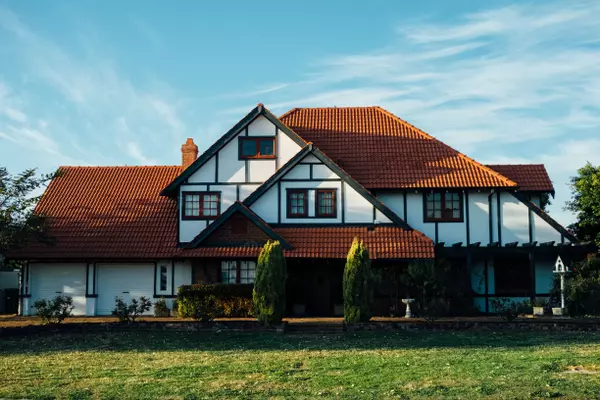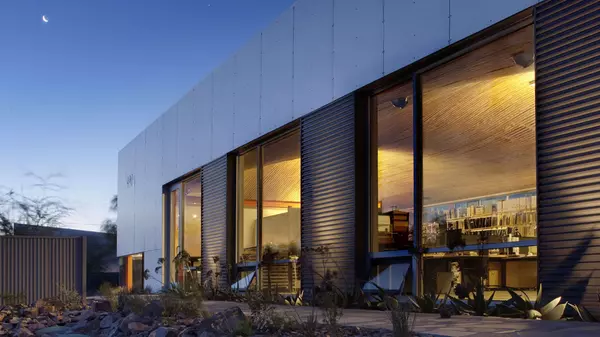The fine print on San Diego’s 101 Ash deal: New numbers, higher costs and 2 differing appraisals
The city of San Diego is seeking to move past a blundered real estate deal with a new high-stakes transaction, this time betting on a development team’s ability to turn the empty 101 Ash St. office tower into hundreds of apartments for low-income families at the expense of recouping what it has sunk into the building.
Recently released transaction documents, published online Monday, bring to the surface the fine print in the proposed 60-year lease agreement with 101 Ash Venture LP. They highlight an array of complexities and sometimes confounding conclusions, as well as corrected numbers and assumptions presented to a City Council committee earlier this month.
The documents include the umbrella contract, called the ground lease disposition agreement, that will go into effect if San Diego City Council members give the OK. The agreement spells out the rules of engagement during the two-year-long period between council approval and the close of escrow, and lays the foundation for the parties to enter into the actual ground lease once escrow closes.
Other released documents include a draft of a city-issued promissory note for the building’s estimated value and a consultant summary report of the economic benefits to the city. There are also two distinct property appraisals — one from a city-hired firm and the other commissioned by the development team — that arrive at drastically different conclusions.
However, the structure of the deal with the newly formed limited partnership, an entity comprising housing developers MRK Partners and Create Dev LLC, is mostly as initially presented by the city’s lead negotiator, Christina Bibler, who heads the Economic Development Department.
From ashes to apartments
The MRK-Create team is proposing to remake the 21-story office building with 247 residential units deed restricted for families earning 30% to 80% of the area median income, or what’s considered affordable housing. The project also includes three unrestricted manager units, 25,000 square feet of retail space and a 4,000-square-foot child care center.
The project cost has grown to $267.6 million since early July with the developer baking in a higher development fee, now $32.7 million, and adding higher project contingency costs to the total.
The new figures tack on costs of $69,016 per unit with a total per-unit cost now approaching $1.1 million.
The city will loan the value of the building, or $45.6 million as established by the developer’s appraisal (at a simple interest rate of 4%) to help finance, on paper, the conversion project. The city is not contributing cash to the project. It will issue a seller’s note to recapture a portion of the outstanding note balance through annual payments that are expected to begin 15 years after the project is completed.
San Diego is also charging $15,000 per year in base rent, with the amount increasing annually by 3% or by the increase to the consumer price index, whichever is greater.
In total, city real estate consultant Keyser Marston Associates Inc. estimates that San Diego will receive $2.3 million in base rent payments over the life of the lease. The firm also estimates that the city will receive a total of $86.4 million in payments toward the balance and interest on the city note, as well as take home $1.6 million when the development team refinances the project, likely in lease year 17.

The total compensation of $90.2 million has, however, a net present value of just $3.6 million, using a 10% discount rate to reflect the time-value of money, according to the KMA analysis.
Net present value looks at the current value of future dollars. A dollar received 16 years from now is worth only 21.7 cents today, when discounted by 10% per year, and the dollars received 60 years from now are worth only 0.3 cents today, said Norm Miller, a real estate professor emeritus at the University of San Diego.
The deal boils down to a policy choice, with the city sacrificing immediate profits in favor of residential units for low-income families.
Even though the deal comes with substantial risk and greatly benefits the developer — the developer is not required to put its own money into the deal, and it receives its entire fee before the city begins to collect on the note, for instance — it may still be the best way for the city to turn a mostly worthless property into something of value.
“The city should do this deal because (101 Ash) is an albatross around their neck. It has negative value to the city’s budget and to the city’s taxpayers,” Miller said. “I think it is a sweetheart deal for the developer, but I don’t see a lot of good alternatives for the city.”
That’s not to say the proposed lease agreement is perfect or even structured in a way that cost efficiently creates housing.
“The city is taking a little more risk than it probably should,” Miller said. “If they had any sophisticated negotiators within the city, they probably would have had something with just a touch less risk for the city and a little bit more for the developer.”
Built in 1967, the 21-story office tower at 101 Ash St. takes up a full city block in downtown San Diego and was the longtime home of Sempra Energy until 2015. In early 2017, the city entered into a 20-year lease-to-own deal to acquire the building and use it for a portion of its downtown workforce.
The transaction turned into a civic mess after a botched remodel effort resulted in asbestos contamination. In 2022, San Diego bought out the lease for $86 million in a controversial settlement agreement. The city continues to spend millions annually on building upkeep and security, although the office tower is empty and uninhabitable in its current state.
When considering just the acquisition price, maintenance costs from 2022 through 2026, administrative costs and consultant fees, the city has spent $96.1 million on the building, according to the KMA report.
City math: Public benefit > payment
In January, San Diego City Council members selected the MRK-Create team to convert the office building into a residential tower with first-floor shops.
Los Angeles-based MRK is a privately held real estate investment company that specializes in affordable housing development, including hotel- and motel-to-residential conversion projects. The company was started by President Sydne Garchik in 2015. Create is a one-person company run by Kelly Modén, a San Diego planning commissioner, specializing in multifamily housing. Modén and Garchik have previously worked together on affordable housing projects.
The women have drafted what they describe as the best solution for the problematic building, taking advantage of a federal program that allocates tax credits annually to states to fund affordable housing projects.
The MRK-Create team’s financing plan calls for two federal subsidies — low-income housing tax credits and historic tax credits — that will contribute nearly $124 million to the conversion project.
The team will seek $87.8 million in low-income housing tax credits, which are highly competitive and doled out on a rolling basis by the California Tax Credit Allocation Committee. If the developer is awarded the tax credits, it would sell them to private investors to secure project funding. The group is also banking on receiving $36.1 million in tax credits associated with historic properties even though 101 Ash St. is not a historic property.
The ground lease disposition agreement gives the developer a two-year window to secure financing.

San Diego is not providing a cash subsidy, but it will underwrite the project through the aforementioned seller’s note. That’s because the developer’s financing model includes the tax credit investments, a construction loan and a B-rated bond, but still comes up $45.6 million shy of total costs.
As proposed, the developer will start to repay the city note around operating year 15 (lease year 17), when the project is refinanced. The city will then receive annual payments equal to 50% of the project’s rental proceeds, minus expenses, with money deposited in the city’s general fund.
However, the note will likely never be paid in full with cash. A financial model prepared by KMA estimates a final balance due of $65 million at the end of the 60-year lease term. Instead of a cash payment, the city will get the building back at the end of the lease, satisfying the terms of the note.
“This is about structure. The city did not want to sell this building outright, which means that we have to participate along the way,” Bibler, the city executive, said. “The city doesn’t mind waiting, knowing that the public benefit far outweighs an annual payment, because we will retain the value of the building at the end of the lease and we’ll have gained all of those new affordable units.”
One building, two appraisals
The amount the MRK-Create proposal needs for gap financing neatly matches the value assigned to the building by the developer’s appraiser, BBG Real Estate Services. The firm used a cost-based valuation approach, as required by the state for tax credit purposes, in its July 2025 report. The report establishes a building replacement value of $45.6 million after depreciation.
Conversely, the city’s appraiser, Colliers International, did not consider the cost-based valuation approach to be an appropriate valuation methodology for the property.
The Colliers appraisal report, dated July 9, sets the as-is market value for the property at $3.9 million, reflecting how much the city could get if it sold the property for the value of the land. That’s because the office tower has no remaining value, according to the report. The appraisal calculation relies on a total land value of $36 million with deductions for building demolition costs, estimated at $27.8 million in 2022, and other standard charges.
“I used to teach appraisal and consult on valuation, and I can tell you that the city appraiser is right. Cost does not equal value,” Miller said. “But for the low-income housing tax credits, you do need to have cost numbers. And, in fact, every dollar that the developer puts into the property is going to result in tax credits. So that’s for the purpose of tax credit analysis. It’s not really for the purpose of valuation, and it’s a little bit of a misnomer to call it a valuation.”
The city’s position is that the appraisals serve different purposes.

“Under the specific condition of doing an adaptive reuse of an office building to become affordable apartments, (the developer) is required to use an appraisal that relies on the cost approach,” said Paul Marra, who is the managing principal of KMA’s San Diego office.
“The cost approach, as you can see from that appraisal, yielded this $45.6 million value,” Marra said. “The transaction does have the city carry that (building value) as a note. There’s insufficient funds for the developer to make a payment toward the building, other than from future operations from the residual receipts.”
The developer was also able to plug the building acquisition value into the state formula that calculates the maximum developer fee allowed under the tax credit program, or 15% of the eligible basis. Eligible basis is the total amount of project costs eligible for generating tax credits.
“The key difference between the draft (financial model) for (the Land Use and Housing Committee) and the (financial model) in our final report relates to the developer fee. The developer realized that they could carry a larger developer fee that included the building acquisition value,” Marra said. “We want developers in tax credit projects to maximize developer fee, because it travels back into eligible basis and generates more tax credit equity.”
Risky business
The valuation and the overall project cost will be put to the test when the developer attempts to sell the tax credits for private equity dollars or secure a construction loan.
“There’s such a big gap between the city appraisal and the developer appraisal that somebody might look at it and say, ‘No, we don’t really think it’s got enough equity to have the loan-to-value (ratio) that you’re saying it does,’” Miller said.
First, though, the developer will need to win the tax credit awards, which everyone acknowledges is not a given.
In terms of the developer’s track record, Garchik, the MRK president, pointed to her company’s role in the Residences at Sawyer’s Walk project in Miami. MRK financed the $500 million deal, she said.
“It was very complicated,” Garchik said. “It had 950 parking spaces, 250,000 square feet of retail and 578 affordable housing units. So from a financing and a construction perspective, (Sawyer’s Walk was) way more complicated than this building.”
However, MRK’s portfolio includes at least one problem project: the Park Tanglewood apartment complex in Maryland.
MRK last year was sued by residents over unsanitary living conditions. The residents complained of pest infestations, a lack of hot water in winter months, inoperable air conditioners in summer months, nonfunctioning elevators and other issues. A separate suit related to the same apartment building, but specific to state rent escrow law, is scheduled to be considered by the Maryland Supreme Court in the fall.
“Park Tanglewood has had some issues with pests in the past and those issues are likely to come up again from time to time due to its density and location. This is why we have an ongoing contract with a respected and established pest control company for proactive remediation monthly and emergency eradication if an infestation breaks out, as is standard for a building of this size,” Garchik said. “The building is subject to several public inspections annually and is currently in good standing on all fronts with successful inspections by the municipality, government agencies and investors in just the last six months.”
The development team has been criticized for other reasons, namely Modén’s role in the project. That’s because the planning commissioner, a volunteer city official appointed by the mayor, has a financial interest in the deal.
San Diego’s Ethics Commission last year determined that there is no conflict of interest, under the city’s Ethics Ordinance, because the project did not go before the Planning Commission. But lawyer Michael Aguirre, a former San Diego city attorney, told the Union-Tribune that state law related to prohibited financial interests is the more relevant issue. California Government Code Section 1090 prohibits public officials from having a financial interest in any contract they make in their official capacity.
Aguirre also takes issue with what he describes as inconsistent appraisals and believes additional due diligence is required. Already, the lawyer has signaled that he will be following the new deal with interest.
On July 3, Aguirre’s firm sent a cure and correct letter, on behalf of taxpayer John Gordon, demanding the city void the Land Use and Housing Committee’s action to advance the transaction to the full council. The committee members voted before seeing the transaction documents, acting to conceal terms adverse to the public interest, the letter states.
The San Diego City Council is scheduled to take up the proposed lease agreement with the development team on July 29.
Categories
Recent Posts











